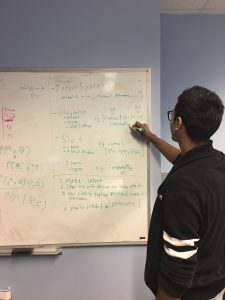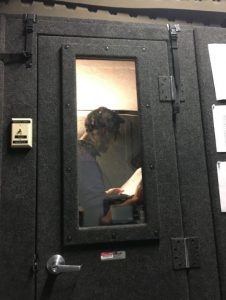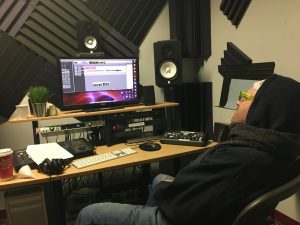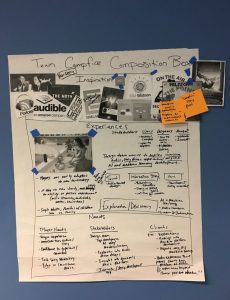This week, Campfire worked on a quarters prototype to demo with the faculty in Week 5. We wanted to target the binary question interaction, and build a foundation to create a natural / conversational method for our system to answer questions.
Technical Development:
This week, Roy and Phan worked on developing the technical foundation for the binary choice and the “tool” mode interaction. To recap, binary choice questions are the first stage in how we are crafting a seemingly open-ended question model, and the “tool” mode is our exploration tool, right now consisting of “start”, “replay” / “start again.” In addition to this, they’ve developed an intent system which allows us to 1) Make intent, 2) Craft phrases that invoke intent, 3) Use “slots” to replace the related words in phrases, 4) Ultimately craft an “utterance”. In addition, they discovered through research that we have a 90 second recording limitation to play audio files, meaning that we need the system to prompt the user with a question every 90 seconds. If it breaks the 90 seconds, the system will shut off the skill, and only the hard coded commands will be active (meaning stop, play etc).
 Intent System
Intent System
Intent A -> [utterance 1, utterance 2…]
- utterance
- e.g. {Command} this {file} Computer Play
- Command / file = Slot
- Slot
- none, list of all the values
- e.g. command [play, open, start]
- Intent
- name
- e.g. computer play
Design Development:
Sarabeth wrote out a script this week based on an interaction that Phan had suggested earlier last week – the judge scenario. In this, we wanted to primarily test out the binary choice interaction, with a stretch goal of creating the “tool” interaction (as stated above). We were inspired the game Her Story and the movie The Princess Bride, for different reasons. In Her Story we took away 1) the player as a character, solving a mystery was powerful in prompting engagement 2) the research / discovery interaction gave the story interaction without delving into branching territory. For the Princess Bride, we looked at 1) how it was able to frame two stories in one, with a guide character introducing the main plot and 2) How a guide character could help the user navigate in way that didn’t take the user out of the narrative.
In the current narrative draft, we took a simple story, in this case Little Red Riding Hood, and turned it around to fit our judge scenario. We did this for a couple reasons
- It would allow us to jump right into quickly developing a narrative without the need for much research to build up the world (narrow in focus)
- Give Seth a springboard for how to start developing an immersive audio environment (music, foley, voice acting)
- Create a short demo without the need for context for the user, in order to achieve our technical aims (e.g. testing the binary choice interaction)


Seth spent the week working with classmates who could provide voice acting for our scenario, creating music and foley to round out the environment, and conducting research through interactive Alexa stories (Earplay, Wayne Investigation…), podcasts and audiobooks. In addition to these elements, he developed a sonic logo for our project.
 Production:
Production:
In anticipation of Quarters, we’ve been working to put together our first technical demo to walk through our first iteration with the faculty. During the walkarounds, we plan to show a quick slide deck overview of our project, our first demo, and our composition box (first created for the Playtest to Explore Workshop in the second week of school). This week we also finalized our branding materials, which included a logo, halfsheet and poster. The branding critique provided us with some useful feedback, notably poster layout (more prominent Echo placement) and logo color (less red)
Looking ahead, we will be working on our demo, and taking our findings to further develop a story for the final experience.
